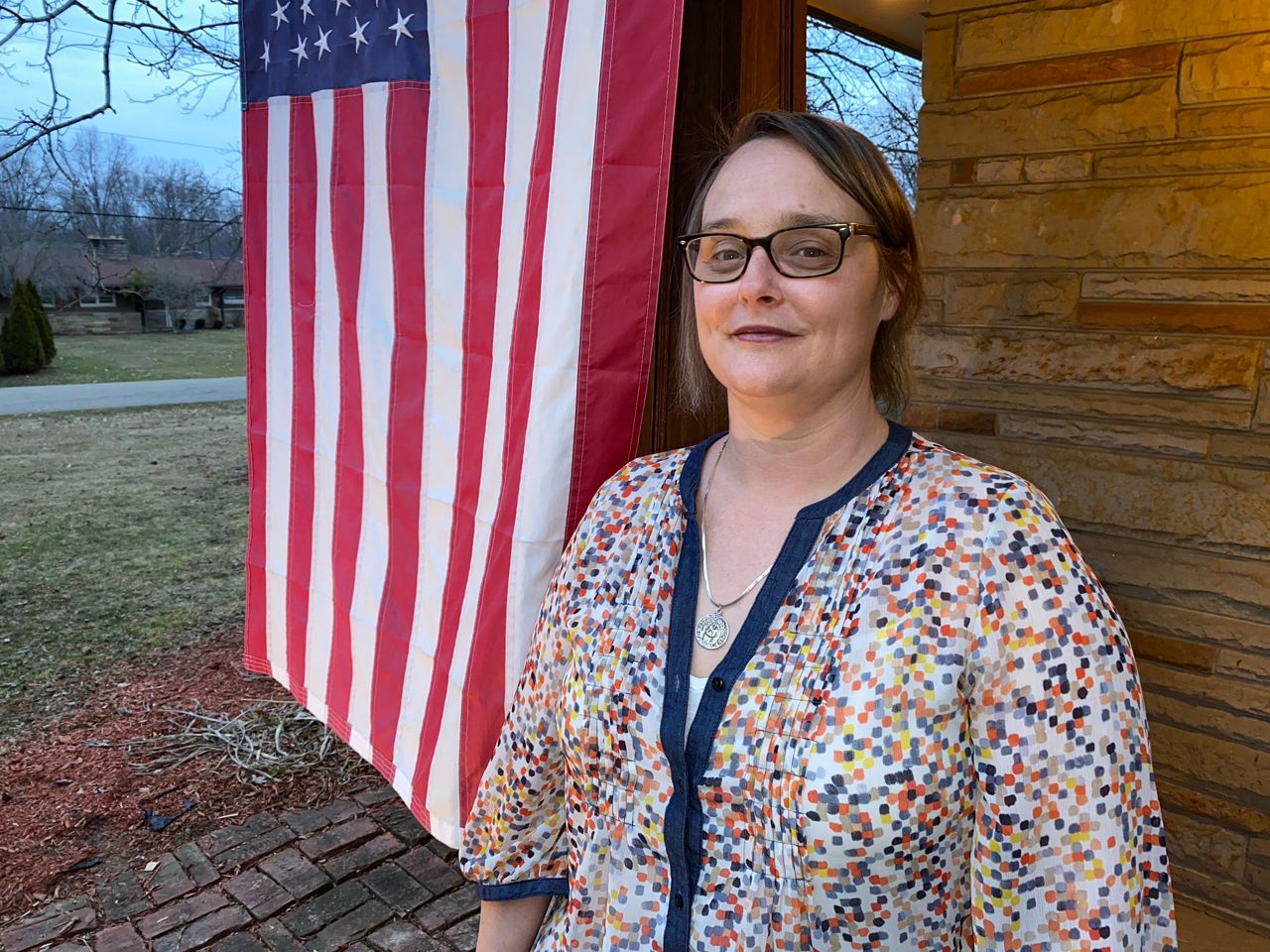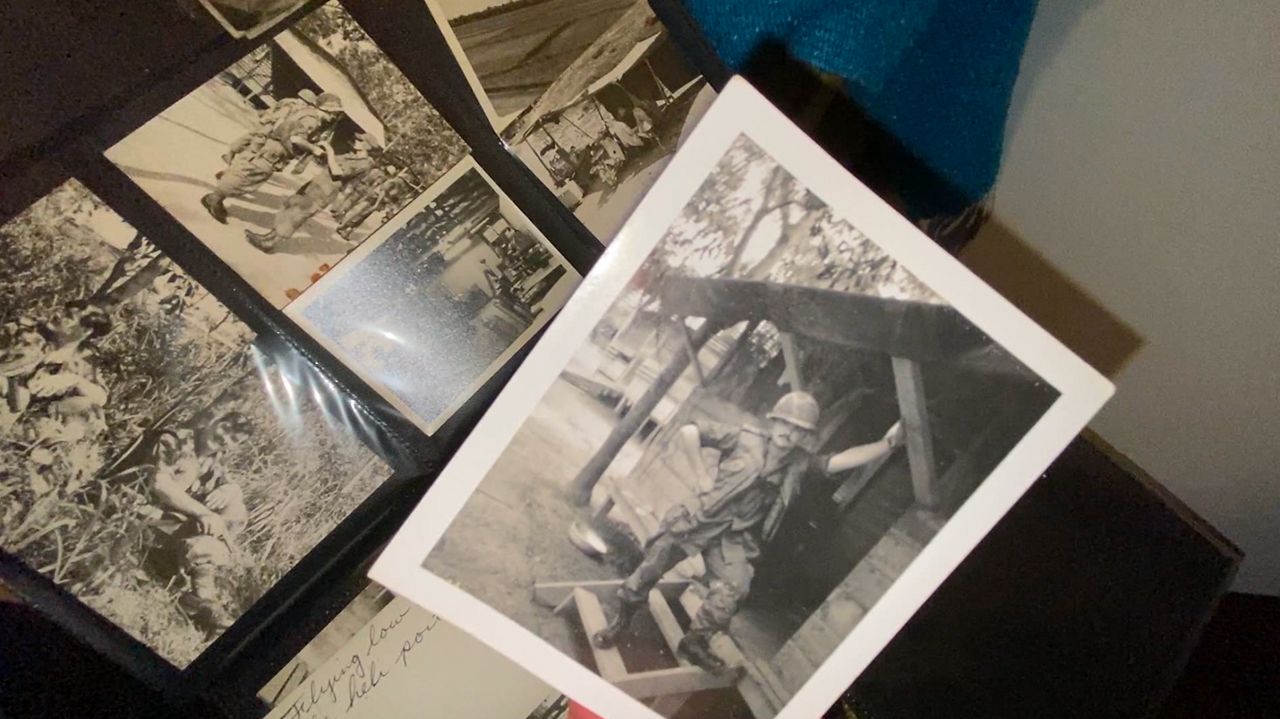CLEVELAND — Creating can be healing.
“Art has always been very important to me," said Heather Bowser while weaving a rug in her Canfield, Ohio home. "I’ve always been into something creatively.”

For Bowser, weaving rugs is her latest way to find solace. It’s just one of many things that keep her hands busy.
But her hands look a little different.
“I joke a lot that I don’t know how you all do it with 10 fingers, cause they’re way too many and way not necessary to have so many,” she said while laughing.
Some photos courtesy of Heather Bowser.
In 1972, she was born two months premature.
“Birth weight three pounds, four ounces,” Bowser read from her baby book.
Her big toe is missing on her left foot and her right leg is missing from the knee down.
“I loved and accepted myself a lot as a kid,” said Bowser. “I thought they were like cool things about me."
But kids were mean. The bullying was constant growing up.
“I was the only kid that I knew with the type of birth defects that I had,” she said.
And while the United States government doesn’t recognize it, Bowser said her birth defects stem from her father’s service in the Vietnam War and his exposure to Agent Orange.
“He was at Long Binh base in the Dong Nai Province,” she said while pointing to one of several war-time pictures of her father that she keeps in a photo album.
Her father, Bill Morris, served in the Vietnam War from 1968 to 1969. He was a patriot and a steelworker. Bowser refers to him as the "selfie king."
“He was a character. He was like bigger than life,” she said.
Agent Orange is a tactical herbicide the United States used to eliminate forrest cover and crops for Vietnam troops in the war.
The negative health effects the toxic chemical exposure to dioxin had on veterans hit headlines in the 80s, and that’s when the Morris family became Agent Orange activists. That included Bowser. She was fighting the fight as young as 7-years-old.
Vietnam may be more than 8,000 miles away & the war may have ended in 1975, but the impact of the devastation Agent Orange caused is everlasting - living out in the children & grandchildren of both nation’s heroes. Children like Heather Bowser. Hear her story on @SpectrumNews1OH pic.twitter.com/lCMP60Yxnq
— Micaela Marshall (@MMarshallTV) March 11, 2021
“It's more just about acknowledging that we exist and we don’t exist. We’ve been denied," she said. "The U.S. government does not acknowledge that children of male Vietnam veterans were effected by their father’s service in Vietnam."
Her mother, Sharon, had two miscarriages before giving birth to Bowser.
“There was a gasp in the room when my mom gave birth," said Bowser. "She woke up with my dad saying I was damaged.”
At the time, why she was born that way was a mystery. Her parents blamed themselves.
“The doctors had told my parents that if they’re that messed up on the outside they’re usually that messed up on the inside too,” she said.
Her younger brother was born able-bodied. But her mother had another miscarriage in between.
Agent Orange became the reason and the enemy.
“They knew the chemicals were bad and they still used them with abandon,” said Bowser.
Her Vietnam veteran father died at age 50 after a slew of health issues.
“He was only 38 when he first started having heart problems," she recalled. "He had five bypasses on his heart when he was 38 in 1986.”

So Bowser formed an army of people bonded by similar trauma by co-founding the Children of Vietnam Veterans Health Alliance in 2012.
“I started to experience the peace of what it meant to be part of something bigger, bigger than myself and understand that I am a piece of everything, but I am not the one and only," said Bowser.
“You cannot have a lotus without going through the mud,” she said while pointing to her lotus tattoo on her left wrist. “Life came from that mud of being different.”
She’s even faced her fear and demons head on by traveling to Vietnam and meeting other people just like her.
“It was really about me trying to learn about how I fit in to everything,” she said.
Bowser’s been back more than once since that first trip in 2011. Four times total. She is proud that a self-portrait she painted is now in the War Remnants Museum in Vietnam.
"To me it's kind of like a legacy," said Bowser.
She and her husband, Aaron, waited five years after getting married to start a family because of concerns that her children could be born with birth defects.
Today, she’s grateful to be the mother of two healthy boys: A sophomore in high school and a sophomore in college.
“Owen and my son Luke,” she said while pointing at framed photos of them in her home office.
“Our thoughts were if the worst thing is they’re going to turn out like me, that’s not the worst thing," said Bowser. "We can handle that.”
The country may be more than 8,000 miles away and the war may have ended in 1975, but the impact of the devastation Agent Orange caused is everlasting.
“I call it like the long shadow of war,” she said.
It's living out in the children and grandchildren of both nation’s heroes.
“I was never there, but it has been part of my life forever and ever and ever. I feel like I have just been a continuation of that because wars don’t end when the cease fire happens,” said Bowser.
Bowser is just one of several people featured in a new documentary called "The People vs. Agent Orange.”
It premiered the first week of March and has been streaming here in Ohio at The Neon in Dayton and at the Cleveland Institute of Art Cinematheque. The film is being shown in theaters around the country and focuses on holding manufacturers accountable for the long-term effects of Agent Orange.



